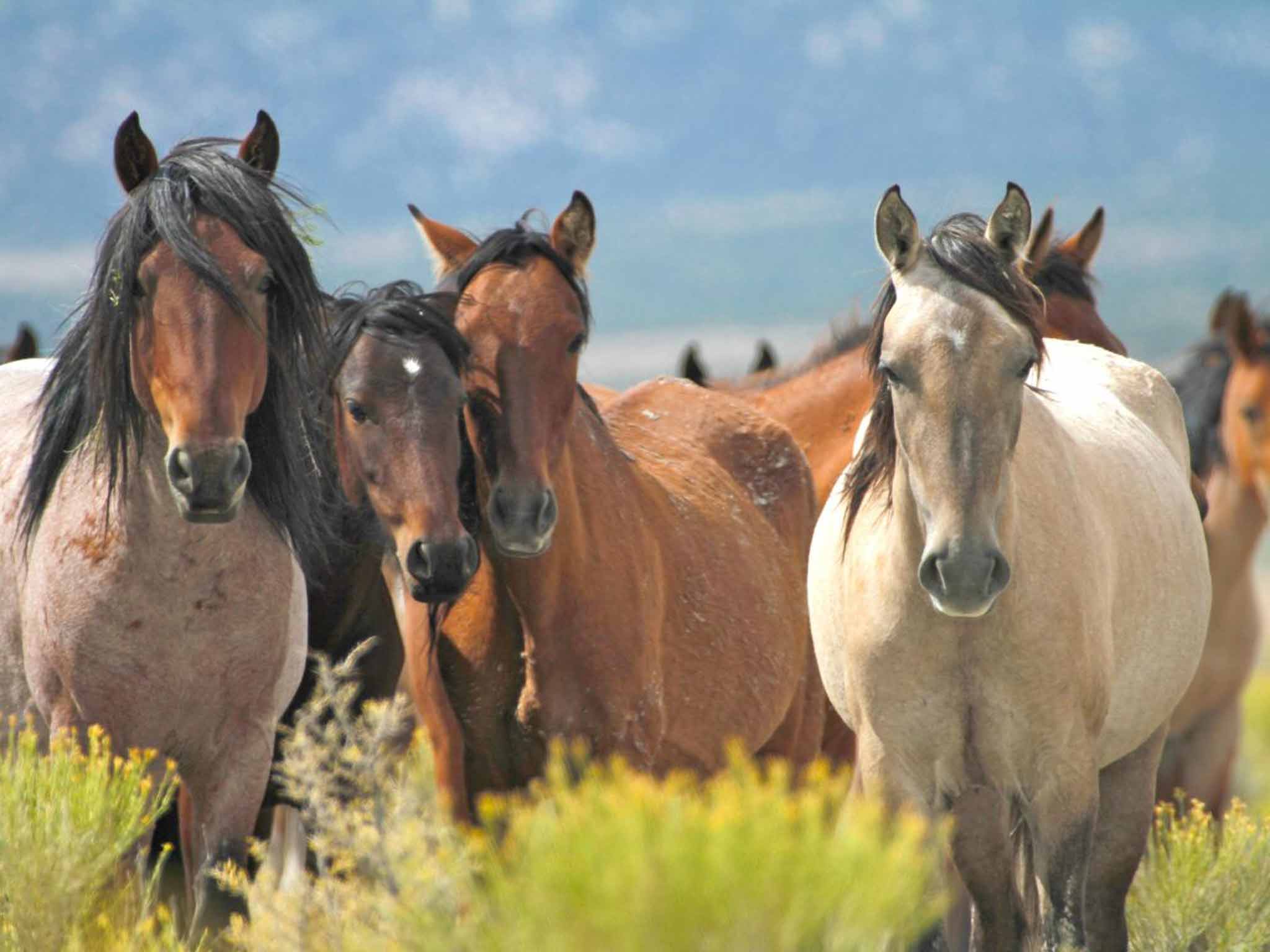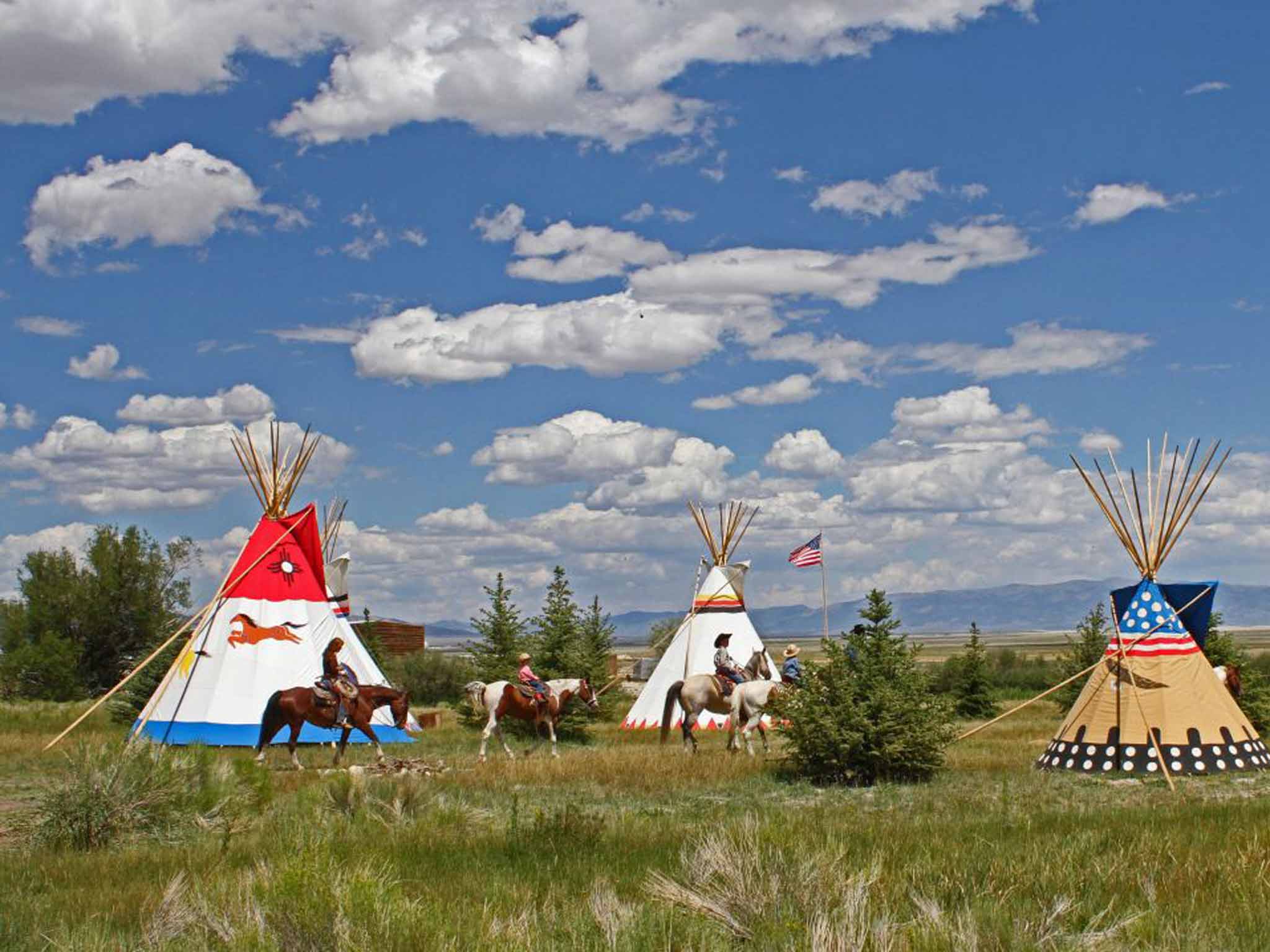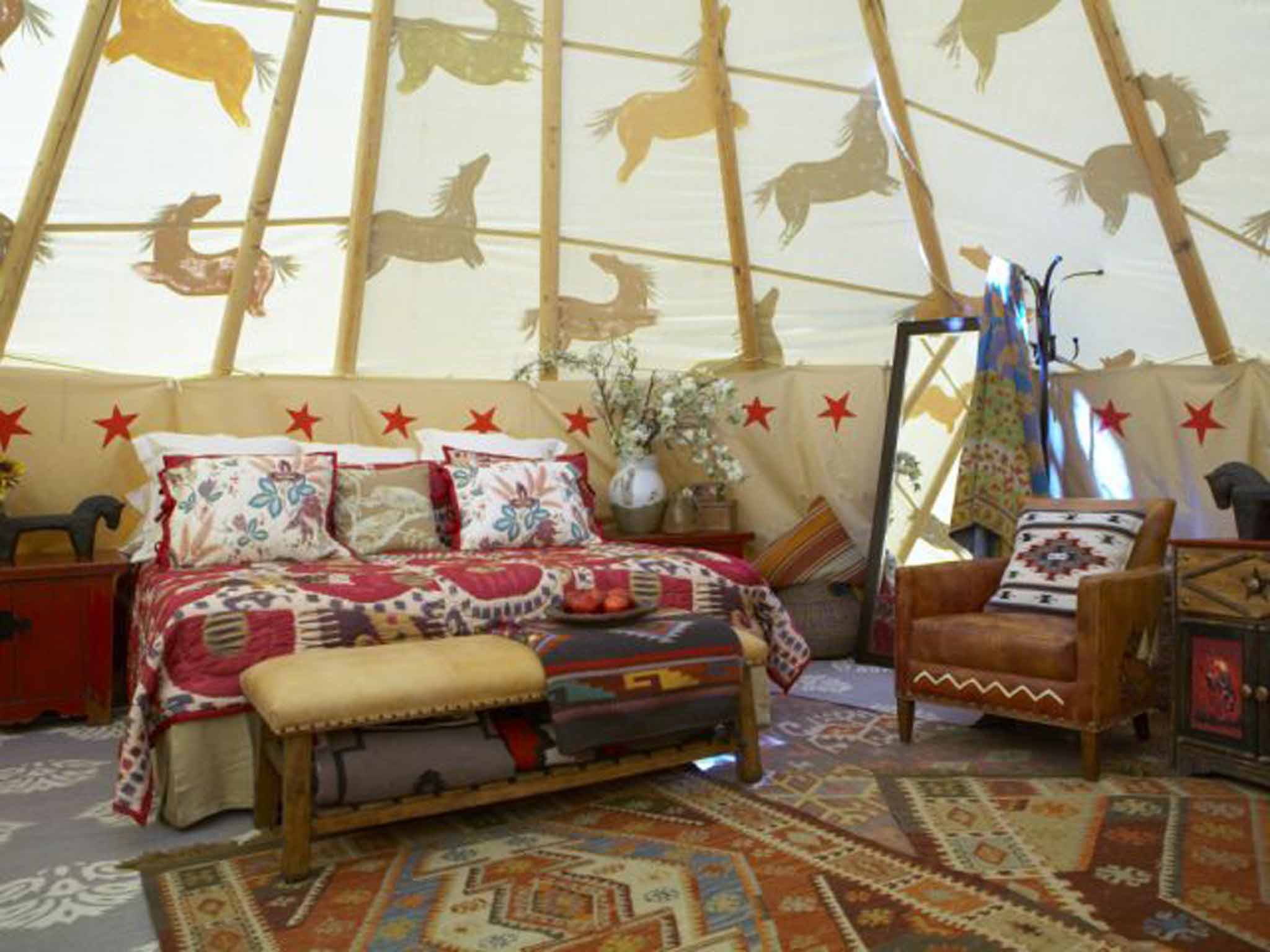Nevada ranch where horses roam free: Mustang Monument is a pioneering refuge for wild horses
Britt Collins hits the trail and enjoys an experience that manages to stay the right side of authentic

In the heat-shimmering emptiness of the Nevada desert, a swirling cloud of dust heralds the loud, sudden arrival of wild mustangs. "Look at 'em go," says cowboy Monty, pointing at the horses thundering into view, as we tear through the scrubland in a high-powered all-terrain vehicle in their wake. It's like chasing ghosts. Somehow I can't quite believe they're real.
Beneath endless, burning blue skies, we stop to gaze in wonder at the heart-stirring sight of these wild herds, once slaughterhouse-bound, charging across the rugged landscape.
Opened last summer, Mustang Monument is a luxury retreat in the sleepy backwater of Wells, Nevada, whose primary focus is to provide refuge to some 1,000 wild horses. For guests, it's a glorious mix of high-end relaxation and old-fashioned adventure. But the primary goal of Madeleine Pickens, glamorous British entrepreneur, philanthropist, and animal-rights advocate, was to create a sanctuary for America's vanishing wild horses rather than a pampering resort.
Inside a turn-of-the-century farmhouse, I meet Madeleine and ranch director Clay Nannini, resplendent in Stetson and spurs. Madeleine recounts her battle with local cattle ranchers who see the wild horses as pests that steal food from their cattle. "I bought the land to save the mustangs. But then I thought it'd be lovely to create a sustainable ranch to share with others."
Clay, a former rodeo star-turned-realtor-turned-cowboy, from Wells, helped Madeleine buy the 600,000-acre reserve, just slightly smaller than the Lake District National Park. She filled it with hundreds of horses that she rescued from an Indian reservation and from kill buyers at auction. "When they first arrived the property wasn't even properly fenced, so we had to build temporary corrals of hay bales," she says. "They were a sad bunch and some had babies by their side. Now they're healthy and happy and back on the range where they belong. Horses helped blaze our trails, fought our battles. They're a national treasure. How can we abandon them?"
Most American mustangs, brutally rounded up by the thousands, are shoved into long-term bare-bone holding pens, paid for by the public purse; many are sold illegally to European meat markets. Pickens says that her ranch alone could save taxpayers as much as $3m a year. She's no stranger to grand-scale animal philanthropy: in the aftermath of Hurricane Katrina, she and her then-husband T Boone Pickens airlifted more than 900 cats and dogs to West Coast shelters.

The next day, I wake to sun filtering through one of the ranch's tepees at 5am and take a look outside to see the mustangs over the creek – sheer magic. Surrounded by rugged canyons, the teepee, painted with mustang motifs, is kitted out with a four-poster bed, patchwork quilts, hand-woven rugs, leather armchairs, cushions, and lanterns.
Just as the sun rises over the Ruby Mountains, Clay comes to invite me to "feed the wilds". Rattling along dirt roads in an old wagon pulled by two big beautiful black-and-white draft horses, we jump off and start distributing hay to the hungry masses shyly gathering round us. Soon hundreds appear from every direction – pintos, paints, greys and palominos – gently whinnying and calling out to each other.
Amazingly, they let us wander around them as they graze. "Like everyone else, they're easily corrupted," says Clay, smiling. "When they first came they were terrified and wild-eyed, kicking and stomping. Mustangs are very adaptable and tough because they've had to be, surviving famines, droughts, wildfires and a harsh climate for generations."
Later, Clay has me saddling up horses to take a group of us riding with his two sheep dogs in tow. "There's everything out here – bobcats, wild elk, ghost towns," he says, leading us up dusty mountain trails through long buffalo grasses and silvery-green spruces.
Trying to be a cowgirl when you're used to chasing buses in London isn't easy. The moment I get distracted by Clay's dogs jumping into a cattle trough to cool off, my horse sprints towards a steep ravine at whiplash speed as I wave like a reed in the breeze.
Calmed by Clay, we rejoin the group and continue up the mountain trails to explore the ruins of an old gold-mining outpost – a few crumbling wooden buildings among the sagebrush that look like a film set. Clay points out the fabled California Trail, which runs through the plains. "Imagine what a tough life it was for those early settlers."
At the top of Spruce Mountain, Madeleine, trailed by her three dachshunds, and sun-scorched action-man Monty Heath arrive with a picnic basket overflowing with breads and cheeses, mountains of wild berries and watermelon.
Sitting on a cliff's edge, over sundowners, I take in the dizzying views of the Ruby Mountains. Clay talks about his days as a rodeo star and his wife's mud wrestling. Monty, a tobacco-chewing ex-US Navy Seal, recalls his former life in the warzones of Bosnia and Afghanistan. Madeleine's story is no less theatrical. A former Pan Am stewardess, she was once the wife of Texan oil billionaire and before that Allen Paulson, developer of the Gulfstream jets.

Back at the ranch, we sit down to a communal, candlelit supper in a teepee; a hearty, homespun affair of bean soup, mushroom skillet, butter-braised greens, and peach cobbler. Later everyone retires to the saloon for whisky sours. The moodily lit parlour is pure Wild West fantasy, with sawdust floors and saddle stools; we settle on the porch, listening to Johnny Cash and counting stars. As the night goes on, a Native American Seminole-Cherokee tribe joins us for some storytelling and pow-wow dancing among the pines.
It could easily feel contrived, but manages to stay the right side of authentic. Mustang Monument peddles the type of carefully curated nostalgia that gives its guests a chance to escape the modern world – a place where as far as the eye can see wild horses run free.
Getting there
Britt Collins travelled with Steppes Travel, which offers a five-night, all-inclusive stay at Mustang Monument (mustangmonument.com) from £2,995pp, including flights from Heathrow to Salt Lake City and car hire (0843 7789926; steppestravel.com).
Salt Lake City is served by Delta and American Airlines via a range of US cities. It's also possible to fly from a range of UK airports on KLM/Delta via Amsterdam.
More information
Great Basin National Park, a 77,000-acre wilderness of glacial moraines, sagebrush meadows, and spruce forests is located three hours south of the ranch. You can hike, picnic by pristine alpine lakes, and tour the Lehman Caves, a mesmerising underground complex of stalactites and stalagmites (travelnevada.com).
Join our commenting forum
Join thought-provoking conversations, follow other Independent readers and see their replies
Comments